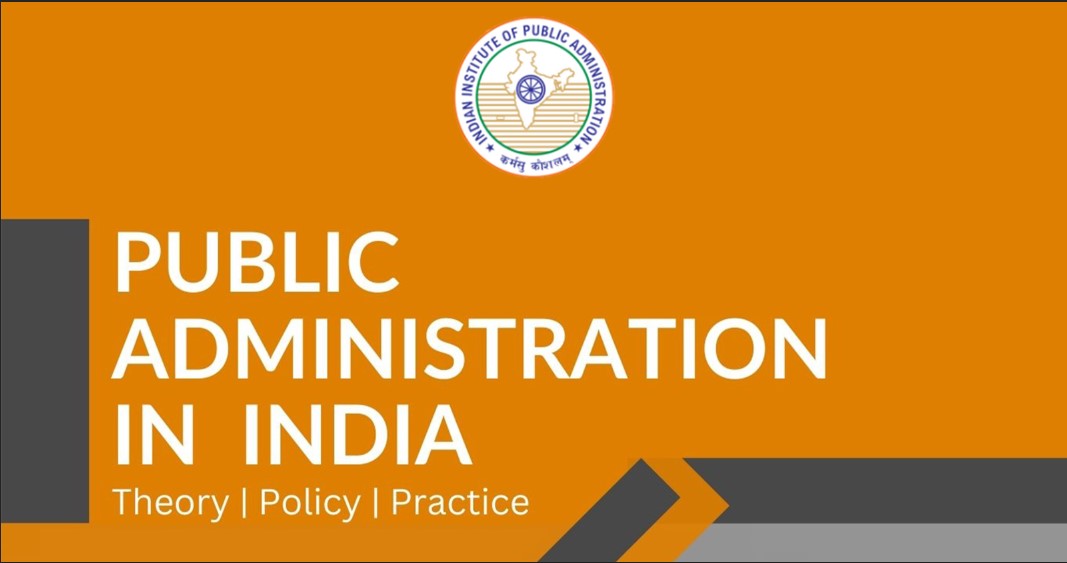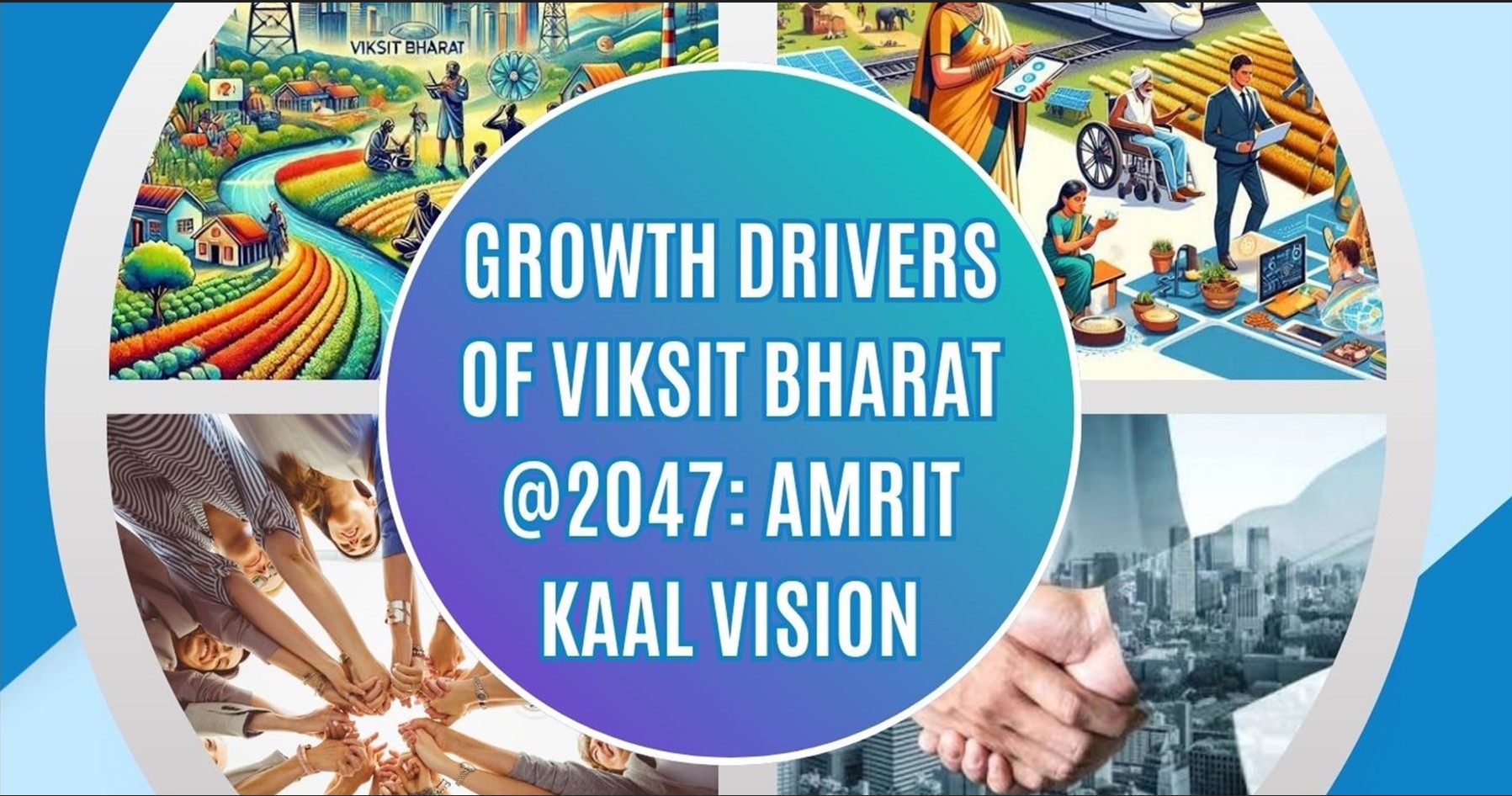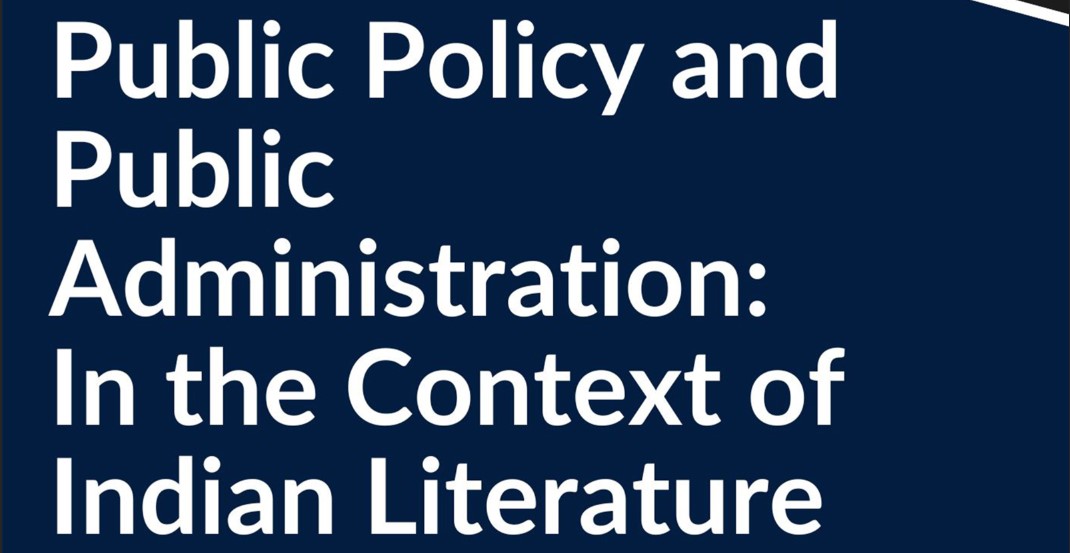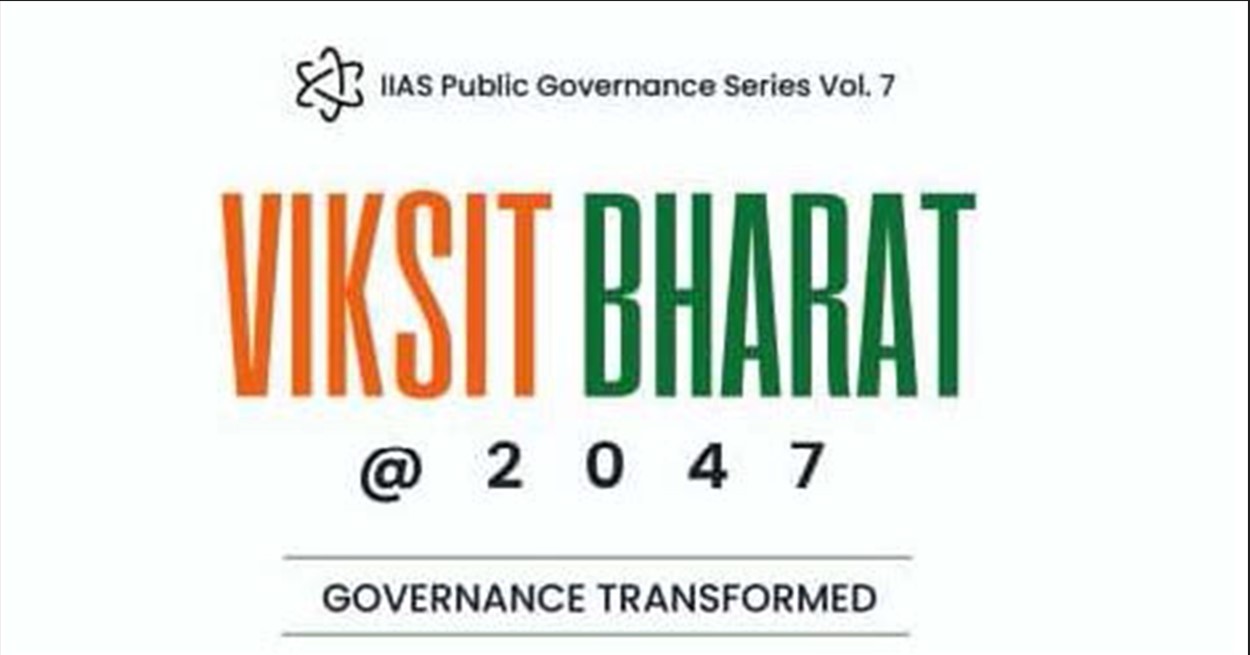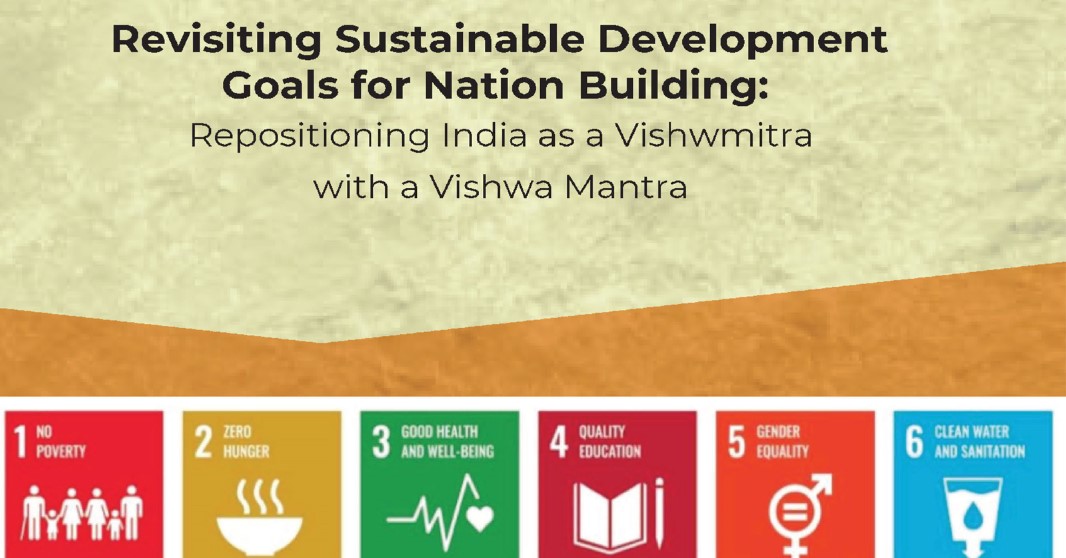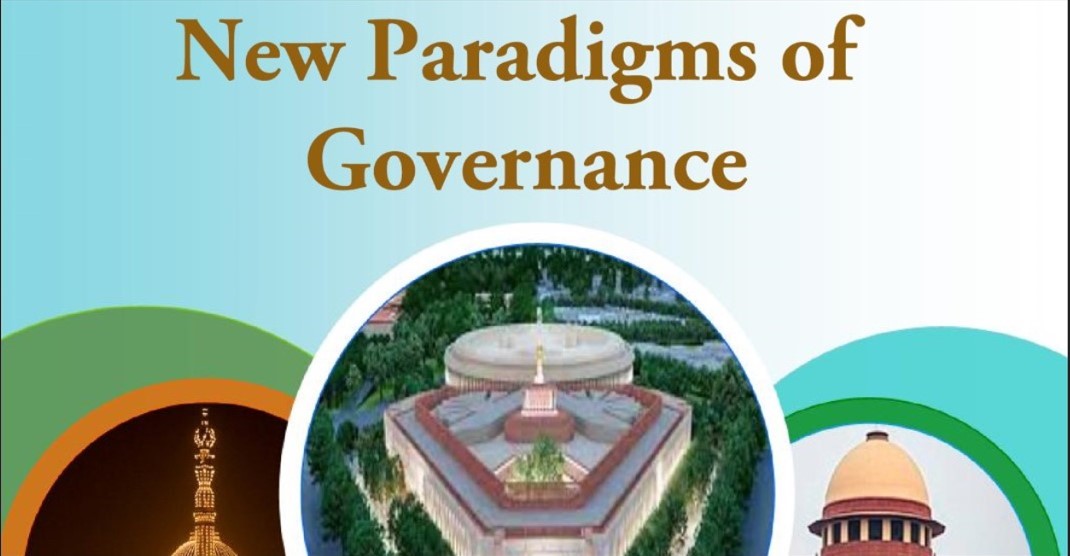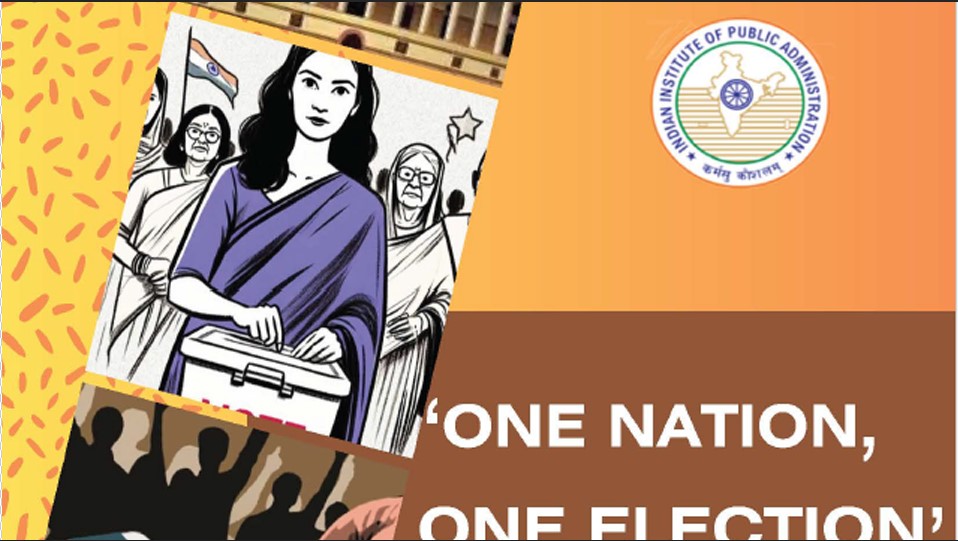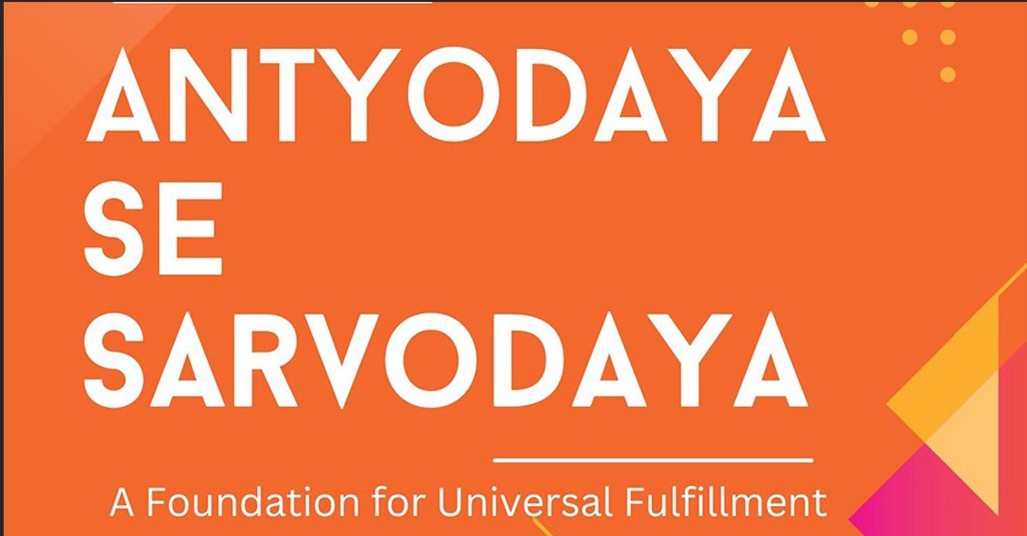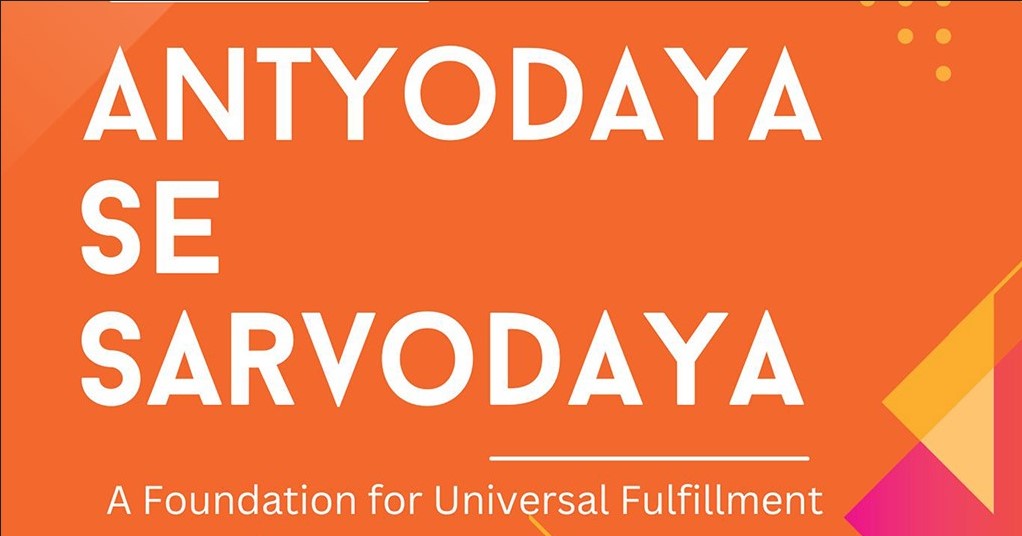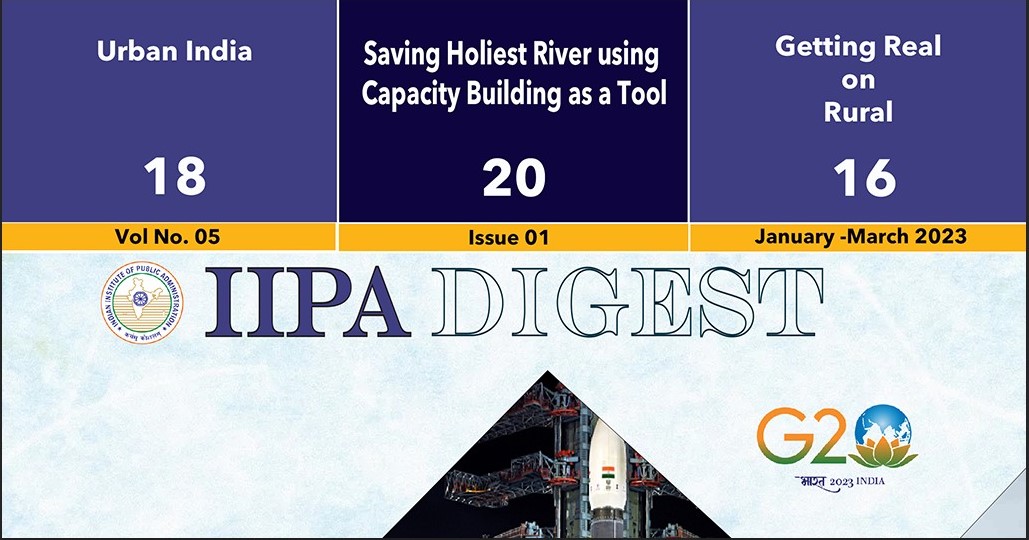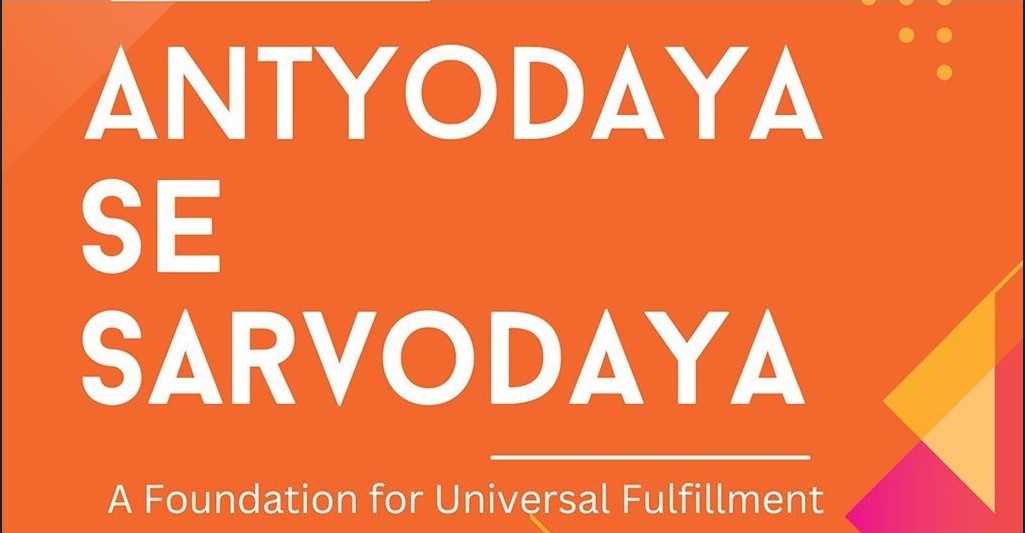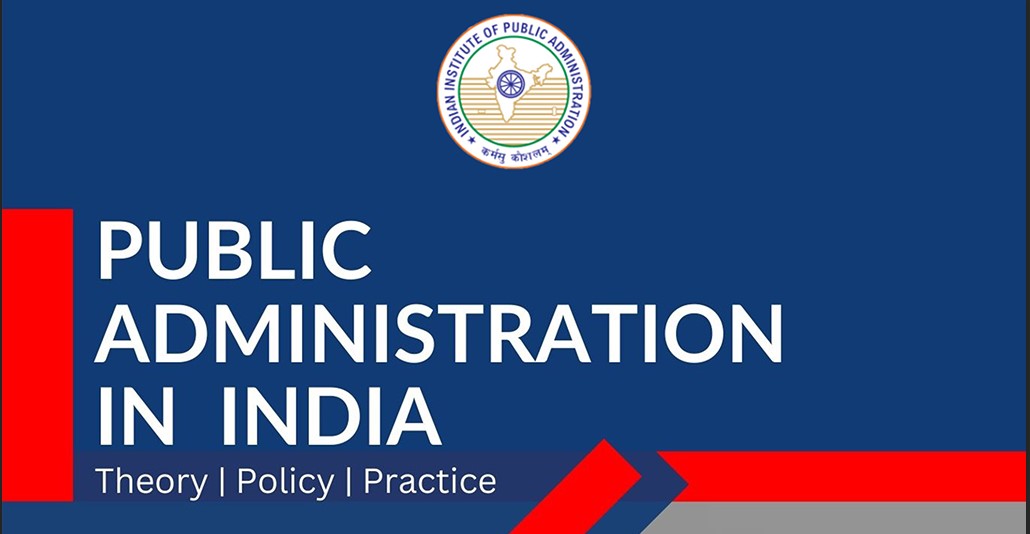Significance of Public Administration
Abstract
The cornerstone of modern governance is public administration. It refers to the organisation, management, and implementation of government policies and programmes, carried out by public officials and institutions. As a vital mechanism of the state, public administration not only ensures the effective delivery of services to citizens but also upholds the principles of accountability, transparency, and the rule of law. In a rapidly changing world, its role in addressing complex social, economic, and environmental challenges has become increasingly significant. Governance is described as the way an organisation takes itself and the processes and structure used to achieve its goals. Governance is also crucially concerned with how organisations relate to each other, how they relate to citizens, and how citizens are given a voice. The essential duty of governance is to effectively and equitably implement the social contract. The transition to liberalisation and economic reforms, as well as new types of managerial setups, is a complex and challenging task that demands a highly competent, well-informed, and caring administration. The concept of “governance” refers to the process of decision-making and the process by which decisions are implemented (or not implemented). It also implies that goals must be set out as clearly as possible. Regardless of the policies the government follows, the goals should be laid out in detail, and the steps towards achieving these goals should be measured as clearly as possible. Then, government agencies should follow the policies that seem most appropriate to achieve these goals, modifying them as necessary to incorporate the best available systematic performance measures. Goals are more likely to be achieved when they are clear, performance is regularly monitored and measured, and state agencies feel that they have a say in how policies are implemented. Additionally, citizens are more likely to appreciate the roles of the government. This paper attempts to understand the meaning, nature, scope, and significance of public administration, validating the facets of good governance advanced through schemes and policy rubrics endorsed by the present government of India. It also endeavours to make suggestions and recommendations that could catalyse a “New Bharat”, echoing the spirit of ‘Ek Bharat Shresth Bharat.”
Keywords: Public Administration, New Public Management, Globalisation, Good Governance
Introduction
Public Administration is an essential part of society and a dominant factor in modern life. With the expansion of modern state activities, public administration has become increasingly important in contemporary society. Every state’s effort to create social welfare has intensified the importance of the subject. It is a creative factor, with its motto being the ‘welfare of man.’ It has been described as the “heart of modern civilisation". Public administration is of pivotal importance in developing countries, such as India, which are engaged in a massive effort to lift themselves out of poverty and achieve a level of happiness and prosperity. It is the field of study and practice concerned with the implementation and management of government policies and programmes. It plays a crucial role in the functioning of government institutions, as it ensures that laws, regulations, and public policies are effectively implemented to serve society’s needs. Public administration encompasses a range of activities, including decision-making, resource allocation, and public service delivery, with the primary goal of promoting the public good and ensuring the well-being of citizens. At its core, public administration bridges the gap between policy-making and public service, ensuring that government bodies’ decisions translate into tangible benefits for the people. It encompasses various tasks, from managing public finances to overseeing public health, education, law enforcement, and infrastructure. Public administrators manage the complex web of government functions and coordinate the efforts of various agencies and departments to achieve desired outcomes. Ultimately, public administration is about efficiently managing public resources, maintaining accountability, and ensuring that government actions align with the values of transparency, justice, and community service.
Public Administration has a larger capacity for different administration fields. It emerges in the political system to accomplish goals and objectives formulated and implemented by political representatives. Public administration is also known as government administration. Public means government; therefore, the focus of public administration is on public bureaucracy, that is, the bureaucratic organisation of the government.
Defining the Public Administration
Public administration refers to the process of doing and getting things done in a government organisation. Management of affairs in an organisation to achieve predetermined targets.
According to Woodrow Wilson, “Public Administration is the detailed and systematic execution of law.” Every particular law application is an act of administration. He further said that administration is the most obvious part of the government; it is the government in action, the executive, the operative, the most visible side of the government.”
According to Luther Gulick, “Public administration is that part of the science of administration which has to do with government, thus concerns itself primarily with the executive branch where the work of government is done, though there are obviously problems in connection with the legislature and judicial branches.”
According to ‘James P. Pfiffner’, “Administration is an organisation and direction of human and material resources to achieve desired ends.”
According to Marshall E. Dimock, “Administration is concerned with ‘what and how' of the government.” The ‘what’ is the subject matter, the technical knowledge of the field, which enables an administrator to perform his task and ‘how’ the technique of management is, principles according to comprehensive programmes are carried through a process.
According to Woodrow Wilson, "Public Administration is a detailed and systematic application of law.” Every particular application of law is an act of Administration”
According to Dwight Waldo (1967), “Public administration is the art and science of management as applied to the affairs of state.”
According to Gladden, “Public Administration is concerned with the administration of the government.”
According to various scholars, public administration refers to the implementation of government policies and the management of public affairs. It encompasses the organisation, direction, and execution of government activities to achieve public goals and deliver services to citizens.
Nature of the Public Administration
Public administration is divided into two divergent views: Integral and managerial perspectives. According to the integral view, public administration consists of all the activities undertaken to accomplish the given goals. Public administration involves technical, clerical, and manual activities. Thus, administration constitutes all activities of all persons from top to bottom. Managerial view: Public administration involves only managerial activities and not technical, clerical, and manual activities, which are non–manual activities. This approach only involves the activities of the top persons. Simon, Smithburg, Thompson, and Luther Gulick adopted this view. According to this view, administration is the same in the entire sphere as the managerial techniques are in the entire sphere as the managerial techniques are in all the fields of activities. Thus, public administration is a detailed and systematic execution of public law. Public Administration is a segment of the wider field of administration. It is the administration mainly concerned with.
1. The Activities of the Government: Public Administration is concerned with the government in action. It is the non-political machinery of the government carrying on its work for the welfare of people according to the laws set up by the state. It refers to the permanent executive and includes all public-importance activities.
2. Public Administration is concerned with the People: Public Administration is concerned with people and not things. Administration is essentially a matter of human relationships. An administrator is neither a philosopher nor a politician. He manages, organises and ensures that things are working in a coordinated manner under the guidance of specific rules and laws.
3. Public administration is distinct from Private Administration: Private Administration refers to the management of affairs by Private organisations, individuals, clubs, companies, or corporations. Management of affairs by a government organisation is public administration. Thus, the administration of post offices and the supply of electricity by the State Electricity Board are all acts of public administration.
a. Political Direction: Public administration is subject to political direction and not private administration. The public administration must carry out the political executive’s orders. On the other hand, private administrators pursue the ends of their own choice. Although the government sometimes makes rules about the quality, quantity, and price of goods, this is only in times of emergencies. Thus, the administration’s likes or dislikes while performing a public policy are immaterial but equally valuable in the case of private administration.
b. Profit motive: Public administration works with the motive of providing public service. Private administration is profit-oriented. No private entrepreneur would ever involve itself in affairs involving maximum loss and minimum profit. On the other hand, the public administration invests in huge projects and risky plans. They are ready to bear loss at the cost of public welfare. Thus, the motive behind public policy is the welfare of the people, whereas in private administration, self-interest is the sole motive.
c. Nature of Functions: The scope of activities under private administration is narrower than that under public administration. Public Administration deals with varied (functions) needs of the people, e.g., maintaining railways, providing post and telegraphs, maintaining hospitals, etc. The functions of private administration do not cover those aspects of human life. It is mostly concerned with the people, e.g., the manufacture of cloth, the supply of sugar, etc.
d. Public Responsibility: Public administration is accountable to the people it serves. Public servants are to act in accordance with the people’s wishes. On the other hand, the private administration does not owe any responsibility to the public, as the public administration does. Public accountability is one of the most striking features of public administration, which is absent in private administration.
e. Uniform Treatment: Under public administration, every official has instructions to treat all people equally. One cannot discriminate between a man and a woman. It must abide by the administration rules. Private administration need not worry about this treatment basis.
f. Organisation: The principle of organisation is common to both public and private administration. To quote 'Huxley', "The State lives in a glass house, we see what it tries to do and all its failures, whether partial or total.” However, private enterprise is sheltered under good opaque brick and mortar."
g. Efficiency: Some thinkers feel that private administration is conducted with a level of efficiency superior to that of public administration. The people regard private administration as more efficient and enjoy certain advantages over public administration, which is marked by red tape, extravagance, corruption, and inefficiency. In private administration, the incentive of higher profits impels the individual to devote himself wholeheartedly to his business. This incentive is lacking in public administration.
h. Service and Cost: In public administration, only the amount of money raised by taxation is necessary for rendering the service, i.e., there is an intimate relationship between the services rendered and the cost of services. Private administration income often exceeds expenditure; otherwise, there would be no profit.
i. Financial Meticulousness: Public administration must be very cautious in financial matters. Officers are accountable to the legislature for every penny they spend. The private administrator, on the other hand, keeps full control of the finances. He is not accountable to anybody else. The source of finance of public administration is the public’s money, whereas the source of finance of private administration is the individual’s own effort and money.
j. Social Prestige: The public administration carries a greater social prestige than its private counterpart. One private business unit does not have the same importance and value as a public administration unit. Private business is necessary as a whole and as a part too. Thus, it can be said that public and private administration are two species of the same genus. However, they have special values and techniques of their own, which give each its distinctive character. The role of public administration in the lives of the people has become more important because of the impact of technological inventions and the Industrial Revolution.
Scope of the Public Administration
There are two views of the scope of public administration: POSDCORB and subject matter. POSDCORB was initiated by Luther Gulick. He describes that administration involves seven elements of public administration. He defines these components into the acronym POSDCORB. Luther Gulick explains seven elements of administration as P – Planning, O – Organising, S–Staffing, D – Directing, CO – Coordinating, R – Reporting, B–Budgeting. The public administration supports the POSDCORB and the subject matter view. However, they are not related but are compatible.
As Mariam defines it, public administration is an instrument with two blades like a pair of scissors. In which one blade denotes knowledge covered by POSDCORB, whereas the other blade is knowledge of the subject matter in which these techniques are applied. Therefore, both blades are necessary to make an effective tool. M E Dimock observed, “Administration is connoted as what and how of the government explains the subject matter of technical knowledge of a certain field, which helps administrators to perform his/her tasks.” ‘How’ refers to techniques of management in which collaborative programmes are adopted to succeed. Public Administration explains or consists of five branches as follows:
• Organisational and Behaviour
• Administration of Public Personnel
• Public Financial Administration (PFA)
• Comparative and Development Administration
• Public policy analysis
Every individual in modern society depends on administration at every turn of their life. Administration plays a dominating role from the cradle to the grave. Diverse views exist regarding the scope of public administration. The two views may be called as
1. Integral View
The supporters of this view include Waldo, J.D. White, Dimock, and Pfiffner. According to this view, ‘administration’ is the total of all the activities—manual, clerical, technical, and managerial—that are undertaken to realise the objectives in view. This view states that legislative, executive, and judiciary activities are included in public administration. It is also called the wider view. According to Willoughby, “The term administration may be employed in two senses in Political Science. In its broadest sense, it denotes the work involved in actual government affairs. In its narrow sense, it denotes the operations of only the administration branch.”
2. Managerial View
The supporters of this view include Simon, Thompson, and Smithburg. This view states that only the activities of the ‘executive’ are included in the scope of public administration and not the activities of the judiciary and legislature. According to this view, only the work of officers working at higher levels is included here and not that of those working at lower levels. This view contradicts the integral view. The work of higher-level officers includes coordination, planning, organisation, direction, and command.
3. POSDCORB View
This view was proposed by ‘Luther Gulick”. The acronym POSDCORB stands for
P→ Planning
O→ Organising
S→ Staffing
D→ Directing
CO→ Co-ordinating
R → Reporting
B→ Budgeting
According to Luther Gulick, these are the seven aspects of the principles included in the scope of public administration.
4. Pfiffner’s View
• Principles of Public Administration: It has 6 main principles: organisation, management of personnel, method and procedure, material and supply, public finance and administration accountability.
• Sphere of Public Administration: It includes the central government, state government, regional and local authorities, and public corporations.
5. Harvey Walker’s View
According to him, public administration can be divided into two parts as follows:
a. Administrative Theory: It includes the study of structure, organisation, functions, and methods of all types of public authorities engaged in carrying out activities at the national, regional, and local levels. It studies the control of parliament and cabinet over administration, judicial control over administration, administrative tribunals, planning, recruitment, research, information, and public relations.
b. Applied Administration: It is difficult to provide a comprehensive statement of what applied administration should exactly include. Walker classified the main forms of applied administration on the basis of 10 principles: political, legislative, financial, defensive, educational, social, economic, foreign, imperial, and local.
Woodrow Wilson’s Public Administration Vision
Woodrow Wilson is widely recognised as the "Father of Public Administration". He is credited with establishing the field as a distinct area of study with his influential 1887 essay, "The Study of Administration". This essay advocated for a scientific approach to public administration, emphasising a separation between politics and administration and is considered the foundational text for the field. His ideas influenced the development of administrative management theory and the work of later scholars like Luther Gulick and Lyndall Urwick. While Wilson is considered the father of the modern field, Paul H. Appleby is known as the "Father of Public Administration in India" for his significant contributions to the development of the Indian civil service. Woodrow Wilson’s vision of Public Administration centred on the idea of a professional, efficient, and politically neutral bureaucracy, separate from the realm of politics. He advocated for a scientific approach to administration, emphasising expertise and merit-based systems to improve government operations.
His vision of public administration focused on separating politics from administration. He defined public administration as the implementation of policies created by elected leaders. According to Wilson, public administration involves the efficient and impartial execution of laws and policies. According to his definition, public administrators act like the gears and wheels of a machine that operate when the elected leaders supply the right policies. Administrators perform the will of the political heads smoothly and systematically. Their job is to ensure that policies and programmes work correctly "with the highest attainable speed, accuracy, and precision.
The major aspects of his vision were as follows:
• Politics-Administration Dichotomy:
He proposed that politics should focus on policy-making, while administration should focus on the execution of those policies, creating a clear distinction between the two. He believed that politics, which deals with policy-making, should be distinct from administration, which focuses on policy implementation. He argued that this separation would lead to greater efficiency and effectiveness in government.
• Emphasis on Efficiency and Professionalism:
Wilson advocated for a professional, merit-based bureaucracy that was separate from political influence. He emphasised the importance of expertise in public administration. He believed that administrators should be trained professionals with specialised knowledge and skills to effectively carry out their duties.
• Merit-Based System
He advocated for a merit-based system for selecting and promoting public officials, rather than one based on political patronage or favouritism.
• Focusing on Efficiency
Wilson’s vision was to create a more efficient and streamlined government that could better serve the public interest.
• Influence of Modern Bureaucracy
Although Wilson’s ideas have faced criticism and evolved, they laid the foundation for modern bureaucratic systems and continue to influence the study and practice of public administration.
• "The Study of Administration"
His 1887 essay "The Study of Administration" is a seminal work in the field, outlining his vision and advocating for a distinct field of study focused on administration.
The idea of Wilson’s public administration also had limitations. In reality, implementing policies requires discretion and judgement from administrators, which blurs the line between policy and administration. Often, administrators influence policy through their advice and suggestions. Furthermore, it is difficult for human administrators to remain completely neutral and impartial. However, Wilson’s vision of public administration created the foundation for modern bureaucracy. His principles of merit-based recruitment, specialised training, political neutrality, and a focus on implementation still drive public institutions.
Significance
The cornerstone of modern governance is public administration. It refers to the organisation, management, and implementation of government policies and programmes, carried out by public officials and institutions. As a vital mechanism of the state, public administration not only ensures the effective delivery of services to citizens but also upholds the principles of accountability, transparency, and the rule of law. In a rapidly changing world, its role in addressing complex social, economic, and environmental challenges has become increasingly significant. Understanding the significance of public administration is essential for understanding how governments function and how they serve the public interest. Public administration has become a crucial segment of modern society, which has witnessed the emergence of what is called by Gerald Caiden in his book “The Dynamics of Public Administration”, which says public administration is:
1. Preservation of Polity
2. Maintenance of stability and order
3. Institutionalisation of Socioeconomic Changes
4. Management of large-scale commercial services
5. Ensuring growth and economic development
6. Protection of the weaker sections of society
7. Formation of public opinion
8. Influence of Public Policies and Political Trends
Public administration plays a crucial role in the functioning of any government and society. In contemporary society, its role has increased. The following factors have contributed to this phenomenon: Scientific and technological advancements have increased the scope of public administration activities, and the Industrial Revolution has enhanced socioeconomic problems, forcing the government to take up new responsibilities. At times, the welfare state changed into the police state, which is also known as the ‘Service State’. The key points highlighting its significance are as follows:
• Implementation of policies: Public administration puts government policies into action. It ensures that the laws and decisions made by elected officials are carried out effectively.
• Maintaining Law and Order: Public administrators enforce laws and maintain peace and order through institutions such as the police, judiciary, and regulatory bodies.
• Economic Development: It facilitates the planning, resource allocation, and regulation necessary for economic growth and stability.
• Social Welfare: Public administration supports social justice by implementing welfare programmes for the poor, elderly, and marginalised groups.
• Disaster Management: It plays a vital role in preparing for, responding to, and recovering from natural and man-made disasters.
• Democratic Governance: It upholds democratic values by ensuring transparency, accountability, and participation in government processes.
• Environmental Protection: Public agencies enforce environmental laws and promote sustainable practices.
• Service Delivery: Public administration is responsible for ensuring that government services, such as healthcare, education, law enforcement, and infrastructure, are effectively delivered to the public. It manages and delivers essential services to citizens, such as education, healthcare, transportation, sanitation, and public safety.
• Policy Implementation: It translates government policies into actionable plans and services that directly affect citizens. Public administrators ensure that policies achieve their intended outcomes.
• Accountability and Transparency: It ensures that government actions are transparent and accountable to the public. This builds trust in government institutions.
• Resource Management: Public administration is essential for managing public resources, such as finances, human resources, and materials. Efficient resource management ensures the optimal use of public funds and improves government operations.
• Social Equity: Public administrators are tasked with promoting fairness and equality through the equitable distribution of government services, ensuring that marginalised groups are not left behind.
• Conflict Resolution: By fostering cooperation between various government agencies and the public, public administration helps resolve conflicts that may arise between different stakeholders.
• Stability and Order: It helps maintain social order and political stability by enforcing laws, regulations, and procedures that safeguard public welfare.
Evolution of Public Administration
As an aspect of governmental activity, public administration is as old as political society, which coexists with the political system to accomplish its objectives. Public Administration has two implications. First, it refers to the activity of administering the affairs of government, such as maintaining law and order. Second, it refers to the field of study, such as philosophy, political science, and sociology. The public administration is about 100 years old. In ancient times, various thinkers contributed to the development of administrative thoughts and perceptions. For example, Kautilya’s Arthasastra in ancient India, Aristotle’s Politics in the ancient West, and Machiavelli’s The Prince in the medieval West all have a common feature of ‘how the state and statesman should behave/administrate’ and also talk about the functioning of the state.
1) Emergence of the Modern States (16th to 18th century)
The Renaissance and Rise of the Nation-State
The 16th century saw the formation of centralised states in Europe, marked by the consolidation of power by monarchies. The formation of bureaucracies to manage these states’ functions began to take shape. Key figures like Niccolò Machiavelli in his work, ‘The Prince’, emphasised the need for a strong centralised ruler.
2) Enlightenment Ideas
● The Enlightenment (17th and 18th centuries) further transformed public administration thinkers, such as John Locke, Montesquieu, and Jean-Jacques Rousseau, who advocated for more rational, just, and organised government structures, leading to the formation of constitutional frameworks and civil services.
● Administrative Reform: During this period, European monarchs (such as Louis XIV in France) began creating more professionalised, centralised bureaucracies to manage growing governmental functions, such as finance, defence, and public order.
3) Early Public Administration Theories of the 19th Century
● Industrial Revolution: The Industrial Revolution caused rapid social, economic, and political changes. Governments face new challenges in managing urbanisation, industrialisation, and the rise of the working class. This era marked a shift towards professional civil services with a focus on efficiency and accountability.
● Max Weber and Bureaucratic Theory: In the early 20th century, Max Weber, a German sociologist, developed the theory of bureaucracy. He argued that bureaucracy, characterised by hierarchical structures, clear rules, and impersonal decision-making, was the most efficient form of administration. This theory greatly influenced the development of public administration in Western democracies.
4) Classical Public Administration
In the late 19th and early 20th centuries, scholars such as Woodrow Wilson (often considered the father of public administration in the United States) argued for the study and development of public administration as a distinct discipline. Wilson emphasised the need for professional public servants to separate politics from administration.
5) The Progressive Era and the New Deal (Early 20th Century)
● Progressive Era Reforms: In the United States, the Progressive Era (1890s–1920s) aimed to reduce corruption and increase government efficiency through civil service reforms and regulatory agency expansion.
● The New Deal: Franklin D. Roosevelt’s New Deal (the 1930s) greatly expanded the federal government’s role in economic and social affairs. The public administration became more involved in areas such as welfare, housing, and unemployment relief, marking a shift towards a more activist government.
6) Post-World War II and Government Expansion (Mid-20th Century)
● Welfare State: Many Western nations developed welfare states after World War II, increasing the demand for bureaucratic expansion to manage social services, healthcare, and education. The idea of government as a force for good, promoting social justice, gained traction.
● Human Relations Movement: As a response to Weber’s bureaucratic model’s rigid and impersonal aspects, scholars such as Elton Mayo and Chester Barnard emphasised the importance of human behaviour, leadership, and motivation in organisations. This led to a more human-centred approach in public administration, with a focus on employee well-being and PSE.
7) New Public Administration (1960s–1970s)
● Public Administration as a Social Science: During the 1960s and 1970s, scholars argued that public administration should not only focus on efficiency but also on social equity and responsiveness to the needs of citizens. This era saw a shift towards a more democratic, citizen-centred view of public administration.
● Accountability and Citizen Engagement: The focus shifted from merely managing bureaucracy to ensuring that public institutions were responsive and accountable to the people, especially in the context of the Civil Rights Movement and other social movements.
8) New Public Management (1980s–1990s)
● Market-Oriented Reforms: The 1980s and 1990s saw the rise of NPM, influenced by neoliberal economic theories. NPM advocated for the introduction of market-based principles in public administration, such as competition, privatisation, and performance measurement. This approach seeks to improve government efficiency and accountability by applying business-like methods.
● Globalisation and Technology: The rise of globalisation and technological advancements have brought new challenges to public administration. Governments began using technology to improve service delivery and promote transparency (e.g., e-government).
9) Contemporary Public Administration in the 21st Century
● Governance and Collaborative Networks: Modern public administration focuses on governance, which includes collaboration among various levels of government, NGOs, the private sectors, and citizens. The concept of "network governance" emphasises partnerships and collaborative problem-solving.
● Public Value and Innovation: In recent years, there has been an emphasis on public value, which goes beyond service efficiency to include democratic engagement, fairness, and long-term societal goals. Public administration increasingly focuses on innovative solutions to complex issues, such as climate change, inequality, and public health.
● Digital Government and Transparency: The integration of technology has led to increased transparency and citizen engagement. E-governance and digital tools are now widely used to improve public-sector services and make government operations more open and efficient.
I. Stages Of Public Administration Evolution
Stage I–Politics – Administrative Dichotomy (1887–1926)
Stage II: Principles of Administration (1927–1937)
Stage III: The era of challenges (1938–1947)
Stage IV: Crisis of Identity (1948–1970)
Stage V: Public Policy Perspective (1970–onwards)
Robert T. Golembiewski describes the four phases of public administration:
Phase I: Administration of Analytics
Phase II: Organisational behaviour/concrete politics
Phase III: Comparative and Development/Management Science
Phase IV: Public Policy
Rise and development of public administration teaching and research
1) Lucknow University became the first university to publish a full compulsory paper on Public Administration in the M.A. Political Science Syllabus in the 1930s
2) In 1937, Madras University became the first university in India to offer diploma courses in public administration in 1937
3) Nagpur University became the first university in India to establish a separate full-fledged Department of Public Administration and local self-government. Nagpur University was the first academic university to be established with legitimacy in 1949–1950.
4) On the recommendation of Paul H. Appleby’s Report, the IIPA was established in the 1953 Report on Public Administration in 1953.
5) In 1987, public administration was introduced as a fully independent subject in the civil services examination conducted by UPSC in 1987.
6) Today, nearly 50+ universities, 100 colleges, and some training institutes are engaged in teaching and research in public administration in India.
II. New Public Administration
Under the leadership of Dwight Waldo, the Minnowbrook Conference was organised in 1968. A few significant landmarks emerged from the conference, such as
1) The Honey Report on Higher Education for Public Service in 1967
2) The 1987 Philadelphia Conference on the Theory and Practice of Public Administration
3) Dwight Waldo published the following articles: (i) Public Administration in a Time of Revolution, (ii) Towards a NPM: The Minnowbrook Perspective, (iii) Public Administration in a Time of Turbulence
First Minnowbrook Conference (1968)
The 1960s in the USA was a time of turbulence due to the war in Vietnam, which involved Afro-Africans and led to urban unrest, campus unrest, political imbalance, and so on. Dwight Waldo states, “neither the study nor the practice of public administration was responding in appropriate measures.” It is client-focused, and according to Frank Marini, public administration is divided into five elements: relevance, value, social equity, change, and client focus.
III. New Public Management
NPM is the latest paradigm in the evolution of public administration, which was introduced in the 1990s by a book titled ‘Reinventing Government’ authored by David Osborne and Ted Geabler in 1992.NPM was introduced by Christopher Hood in the article ‘A Public Management for all Seasons, published in 1991. The New Public Administration aims at 3Es – Economy, Efficiency and Effectiveness.
IV. Public Choice Approach
With the New Public Administration, the Public Choice Approach emerged in the 1960s. Vincent Ostrom is a chief propagandist of this approach, which replaced the “bureaucratic doctrine” with the concept of democratic administration. In the book ‘Intellectual Crisis in American Public Administration’ by Vincent Ostrom, he writes -Bureaucratic structures are important but not sufficient for a productive and responsive public service economy.” Public choice Approach emphasises the following:
1) Antibureaucratic approach
2) Institutional pluralism, that is, the plurality of agencies to promote consumer preferences
3) Diverse democratic decision-making centres
4) Decentralisation and
5) People participation
V. Liberalisation
Liberalisation refers to the process of reducing restrictions and regulations in various sectors, such as economics, trade and government policies, to allow for greater freedom and competition. In an economic context, liberalisation often involves removing trade barriers, reducing tariffs and allowing foreign investment to promote efficiency, innovation and growth. For example, when a country liberalises its trade policy may reduce import duties and quotas, making it easier for businesses to trade goods and services across borders. Similarly, in a more general sense, liberalisation can apply to sectors such as finance, where regulations may be relaxed to encourage private investment or competition. The idea behind liberalisation is to foster a more open and competitive environment, which can lead to better services, lower prices and improved overall economic performance. However, if the benefits of liberalisation are not distributed evenly, it can also lead to challenges such as job displacement in certain industries or inequality.
Challenges Of Liberalisation
While liberalisation can offer economic growth and efficiency, it also presents several challenges. Some key challenges include the following:
• Inequality
Liberalisation can intensify income inequality, particularly in developing countries. Increased trade, investment, and competition may not be equally distributed, with wealthier individuals and businesses often benefiting more than poorer groups. Rural areas and less-skilled workers may face greater economic hardship.
• Job Losses
Opening up to global competition can lead to the decline of certain industries that cannot compete with foreign companies, resulting in job losses. This is especially true for sectors such as agriculture or manufacturing, which may struggle to compete with cheaper foreign goods or more advanced technologies.
• Cultural Erosion
Economic liberalisation, particularly when it involves increased foreign investment, can lead to the erosion of local cultures, traditions and values. The globalisation of products and services might overpower local businesses and cultural practices, leading to a loss of identity in some regions.
• Market Volatility
Increased liberalisation of financial markets can lead to increased exposure to global financial shocks. For example, developing economies can become vulnerable to international economic downturns or speculative investment flows, leading to instability.
• Environmental Degradation
Some businesses may exploit natural resources in the pursuit of increased profits and global competitiveness.
VI. Privatisation
Privatisation refers to the process of transferring ownership or control of a business, industry or service from the government or public sector to private individuals or companies. This often involves selling government-owned enterprises or services to private investors to increase efficiency, reduce costs, or stimulate market competition. While privatisation can bring benefits such as improved service delivery and reduced costs, it can also lead to concerns about job losses, reduced public access to essential services, and increased inequality, especially when vital sectors such as healthcare, education, or utilities are involved. The debate over privatisation is ongoing, with varying opinions on its social and economic impacts. In some cases, liberalisation can lead to increased dependence on foreign markets and investments, making the economy vulnerable to external economic fluctuations or global recessions. Regulatory Challenges: Governments might struggle to regulate new market dynamics effectively, which can lead to monopolies, corruption, and unethical business practices.
VII. Globalisation
Globalisation refers to the process of increasing interconnectedness and interdependence among countries, economies, and cultures. It involves the movement of goods, services, ideas, people, and information across borders, leading to greater interaction and exchange between nations.
Key aspects of Globalisation include:
• Economic Integration: The creation of a global economy through trade, investment, and capital flow. This has led to the expansion of MNCs and the global supply chain.
• Cultural Exchange: Globalisation has facilitated the sharing of cultural practices, values, and ideas across countries, leading to the spread of music, fashion, food, and technology.
• Technological Advancements: Rapid technological progress, particularly in communication and transportation, has played a central role in connecting people and businesses worldwide.
• Political Interdependence: Nations increasingly collaborate on global issues, such as climate change, security, and human rights, through international organisations like the United Nations and the World Trade Organisation, and others.
• Labour migration: Movement of people across borders for work or better living conditions, often leading to increased diversity in many regions.
However, globalisation also comes with challenges such as economic inequality, cultural identity loss, and environmental degradation. Critics argue that it disproportionately benefits wealthy nations and multinational corporations while disadvantaging poorer countries or local businesses.
VIII. Governance and its Core Element
The core element of governance, accountability, seems to be missing at many levels. In a country like India, which has the largest number of people whose incomes are below the federal poverty threshold in the world, good governance must mean being pro-poor and gender conscious. It involves improving bureaucratic and political accountability, fighting corruption, promoting people’s participation, ensuring equity, transparency, and adherence to the rule of law, and making effective and efficient use of the nation’s resources. The poor record of most public agencies in the area of prompt and effective redressal of public grievances is a major cause of public dissatisfaction and the subject of criticism by elected representatives. It is noticed that many government departments and their subordinate offices, which have substantial public interface, do not display the required orientation to the needs and circumstances of the public, especially the weaker sections of society, women, and the handicapped.
State governments have instituted systems of time-bound redressal of citizens’ grievances, which are often monitored through computers and through programmes like e-Seva, Dial your Commissioner, Collector and Superintendent Police in Andhra Pradesh. In many states, such as Tripura, district officials are required to visit villages and blocks together periodically to listen to the grievances of the people and redress them on the spot. Ministers also convene Janta Darbars.
Progress in the disposal of public grievances is being monitored by the Central Government through the Department of Administrative Reforms and Public Grievances. The Directorate of Public Grievances in the Cabinet Secretariat deals with cases of individual grievances for central agencies with a large public interface and has the power to call officials and the concerned files to give a binding order. Central Ministries such as Railways, Posts, and Telecommunications have set up Lok Adalats to deal with complaints in the presence of consumers. Social audit panels of eminent citizens examine the quality of services of the Postal and Telecommunications Department. There is an ombudsman for commercial banks. The Central Manual of Office Procedure provides for the fixation of time limits for dealing with public grievances, while the Code of Conduct rules provide for disciplinary action in case of negligence in grievance redressal.
A demonstrable and effective way of ensuring the prompt redressal of public grievances would be through the establishment of independent public grievances committees, which would consist of eminent citizens. Such committees can be authorised to inspect the adequacy and functioning of grievance redressal systems in various public offices and report to the Cabinet Secretary (Central Government) and Chief Secretary of the State Government of actions to remedy the system and take firm steps against negligent officials. It is also possible to set up independent watchdog committees at the district level to report to the state government on the functioning of grievance redressal systems. The Himachal Pradesh Specific Corrupt Practices Act makes an officer’s omission to discharge his statutory or bona fide duty a corrupt practice. Similar enactments or the provisions of the draft Karnataka Administrative Procedure Bill could be considered to oblige officials to respond to public requests.
Governance: The Journey and Transformation
The 21st century should be an era of new forms of governance that differ from what has been seen in the past. Due to widespread economic problems and fiscal constraints in the 1980s, governments around the world, both rich and poor, concluded that government had become too big, too costly, and ineffective. It appeared that the state, once believed to be the prime mover that pushes sluggish economies to progress and provides needed capital, had failed in its noble task. The effects of reengineering and reinventing governments were also exerted, reflecting new thinking on how governments should work. With powerful global trends, such as liberalisation and globalisation, also influencing economics, displacements added to the pressure for change. Because of the problems encountered when the government assumed responsibility for development, the new concept of government uses a new term, governance, which is anchored on consensus, collective choice, shared responsibility, accountability, transparency, predictability, and participation. Governance encompasses the nature of state functioning, institutional and structural arrangements, decision-making processes, policy formulation, implementation capacity, information flow, leadership effectiveness, and the relationship between the ruler and the ruled.
Therefore, governance concerns not only the integrity, efficiency, and economy of government but also its effectiveness in terms of the needs to which government organisation and activity are directed. Good governance implies providing service to the people. The task of governments is to govern in a way that optimises the security and welfare of citizens. Good governance measures how far the government can improve the quality of life of people, tangibly and intangibly. Even if there is a good democracy and a good constitution, but people are hungry, a good democracy and a good constitution would mean little. Democracies, accountability, honesty, and commitment to service are the only processes that deliver good governance. Good governance must have its own measures based on the overall performance of the state as measured by the improvement in the people’s quality of life. There is an inherent danger in measuring good governance on the basis of process alone. In brief, good governance is defined as the use of political authority, the exercise of control over society, and the management of its resources for societal and economic development. Good government provides a responsive governmental and state administrative framework that facilitates good governance. While good governance and economic development must be longer-term goals than good government, the former will not be achievable without attaining the latter. Good government in practice would mean the following: political legitimacy for the government through democratic elections and transfer of power, political opposition, and representative government; accountability through the provision of information, separation of powers, effective internal and external audit, low levels of corruption and nepotism; official competency such as having trained public servants, realistic policies and human rights as indicated by freedom of religion and movement, impartial and accessible criminal justice systems, and the absence of arbitrary government power.
Institutional Building and Capability
Good governance requires the establishment of institutions for a capable public sector to enhance the effectiveness of the state. Once poor systems are in place, they can be very difficult to dislodge. Strong interests develop in maintaining the status quo; however, this is inefficient or unfair. Good policies by themselves can improve results, but the benefits are magnified where institutional capability is also higher, where policies and programmes are implemented more efficiently, and citizens have greater certainty about the government’s future actions. Therefore, strengthening the institutional arrangements within which the policies have to work is imperative. In a democratic set-up, politicians set goals and broad strategic directions, but sound institutional arrangements can determine whether the vision of political leaders is translated into effective policy priorities. The rules and norms embedded in the policy-making process should be designed to curb the political pressures that can lead to poor decision-making and bad outcomes. Evidence across a range of countries shows that well-functioning bureaucracies can promote growth and reduce poverty. They can provide sound policy inputs and deliver critical public goods and services at the lowest cost. However, the problem is that if adequate care is not taken, the best-designed policy will achieve little if it is poorly implemented. Poor quality, high cost, waste, fraud, and corruption affect the delivery of services.
This problem can be traced back to the belief that the government should be the dominant, if not the sole, provider of services. However, today, with liberalisation and globalisation of the economy, this concept is changing; the state must play the lead role of not providing but facilitating. Good governance also implies that goals must be set out as clearly as possible. Goals are more likely to be achieved when goals are clear, performance is regularly monitored and measured, and state agencies feel that they have a say in how policies are implemented. Citizens are more likely to appropriate the roles of the government.
Restructuring Public Services
With the changing role of the state, public services have been under tremendous pressure, which calls for the very restructuring of public services. Building a more responsive state requires working on mechanisms that increase openness, provide a large number of incentives for participation in public affairs, and, where appropriate, lessen the distance between government and citizens. To enhance the capacity and capability of the state, the crisis administration calls for a redefinition of the role of the government, its functions, and its real focus to serve the public effectively and ensure efficient and cost-effective administration. Governments must demonstrate a clear vision of the future based on values that are widely shared in society and leadership qualities. This entails political commitment and continuity, team building for managing change in government and administration, and the setting of priorities as tangible, realistic objectives.
If public service reform is to be effectively implemented, it requires a holistic approach that integrates the multiple human resources, financial, technical, and structural factors involved in a demanding environment. During the past few years, especially after the introduction of the New Economic Policy in India, both the central and state governments have initiated public service reforms as a strategy towards achieving developmental goals. This is also due to the realisation and recognition that there is an urgent need for administrative reforms to increase the capabilities of the administrative systems in performing economic and social development goals. Deficits in the administrative machinery have also been observed to constitute a major obstacle to the effective implementation of development plans. The reform initiatives focus on the following areas:
i. Making the administration accountable and citizen-friendly
ii. Ensuring transparency and the right to information.
iii. Taking measures to cleanse and motivate the civil services.
Such refor
Leave a comment
More articles from Governance & Polity
